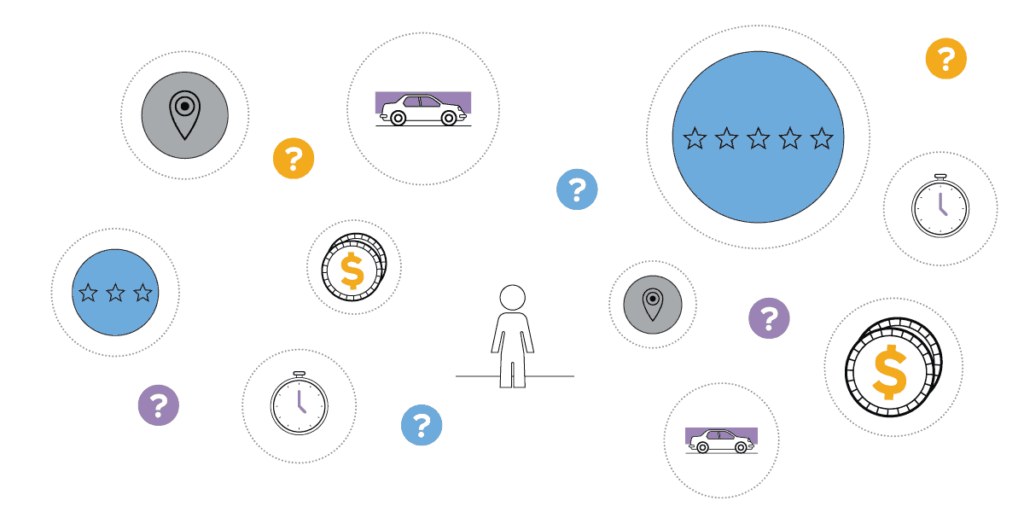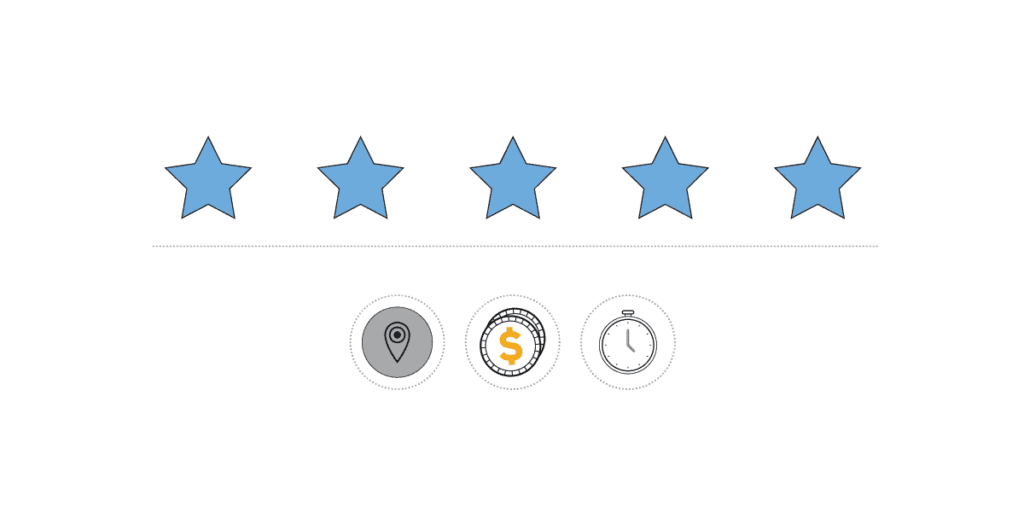Share:
At Evive, we care deeply about making the benefits user experience convenient, seamless, and relevant. These are often the missing pieces of the puzzle when it comes to solving problems in benefits engagement, and our research shows exactly what needs to be done to address each one.
A joint study we conducted with The University of Chicago Booth School of Business, for instance, revealed that healthcare patients value many different variables when it comes to choosing providers or procedure facilities. They’re typically willing to spend more money if a facility is closer to home, or if it comes with a trusted doctor’s referral. In fact, the latter proved to be more of an influencer overall—an analysis of 237 consumers showed that people were more likely to go to a facility recommended by a doctor than a non-referred facility closer to home, even if that meant spending an additional $205 out of pocket.

This presents an interesting dichotomy between healthcare consumerism and other consumer experiences. Generally, consumers heavily base their purchases on price—but that correlation isn’t always there in healthcare. The complicated relationship between quality and price in healthcare has left consumers challenged to get the value they seek at an affordable price. But from our research, we learned that at the end of the day, people are willing to pay for the quality that’s implicit in their doctor’s referral.
So we decided to take this implicit measurement of quality and make it more objective and explicit. By prioritizing the variables that people find most important, and using those data points to drive relevant guidance, we provide healthcare consumers with the information they need to make better choices.
Highlighting convenience and quality…
In the spirit of our user-centered design approach, we ensured our provider-search tool, Evive Best Match, was created with the consumer’s priorities in mind. Best Match helps users identify nearby healthcare providers, but goes a step further than location. Knowing that people are sensitive to quality in healthcare, we decided to gather, communicate, and rank their options by quality first—while still including cost, network, and location.
The search applies to both those seeking a primary care physician, and those seeking a specialist for a certain procedure. Whether the user needs a new doctor in general or has been tasked with undergoing a specific surgery, our system helps guide them to the best quality source of care.
Many would say there are no direct metrics that are universally agreed upon to determine quality in healthcare. They’d say it’s subjective—and we agree. So we looked outside healthcare to see how other sectors addressed this. In web search, a similar situation exists: There is no universal standard to determine if a page is more relevant to a search. But when Google is faced with the task of ordering by relevance, they use an algorithm called PageRank that utilizes the referral patterns from other sites as a way to crowdsource quality.
Taking the same approach with our tool, we asked ourselves, what is the “medical equivalent” of PageRank? How could we help people recognize a top-quality healthcare provider and convey it appropriately? Since many people turn to personal recommendations when it comes to searching for trustworthy doctors, we decided referrals were the place to start. Just as a website having lots of inbound links from other websites communicates credibility to internet users, a doctor’s rich history of referrals from other doctors communicates credibility to healthcare consumers.

To display this in Best Match, we developed a five-star quality scale called the Care Score that people can reference when searching for a doctor. The five-star concept is recognizable to consumers, enabling an intuitive user experience. Referrals from the doctor’s network, as well as Medicare/Medicaid data, are assessed to influence the star rating.
…while keeping cost in mind
As referenced in NEJM Catalyst, high value doesn’t just mean achieving a great outcome, but achieving that outcome at the lowest possible price. With that in mind, it’s important we make cost clear in the search results for Best Match users.
The results are sorted based on quality, and each one has a cost and fair-value rating accompanying it. We’ve partnered with a highly respected price-transparency vendor that informs the cost shown with each doctor and procedure a user views. This ensures the user knows how the price of each option compares with others in a validated way. Furthermore, it lets the user make an informed decision about their care—understanding the quality first, while considering the price second.
It all comes down to the user
Different problems require different solutions, and not all consumer experiences are shaped by the same values. By building a tool that mirrors the consumer’s thought process in other experiences, and that offers answers based on all of their priorities, we’ve created a simpler way to find the right healthcare options for any given person, at any given time.






